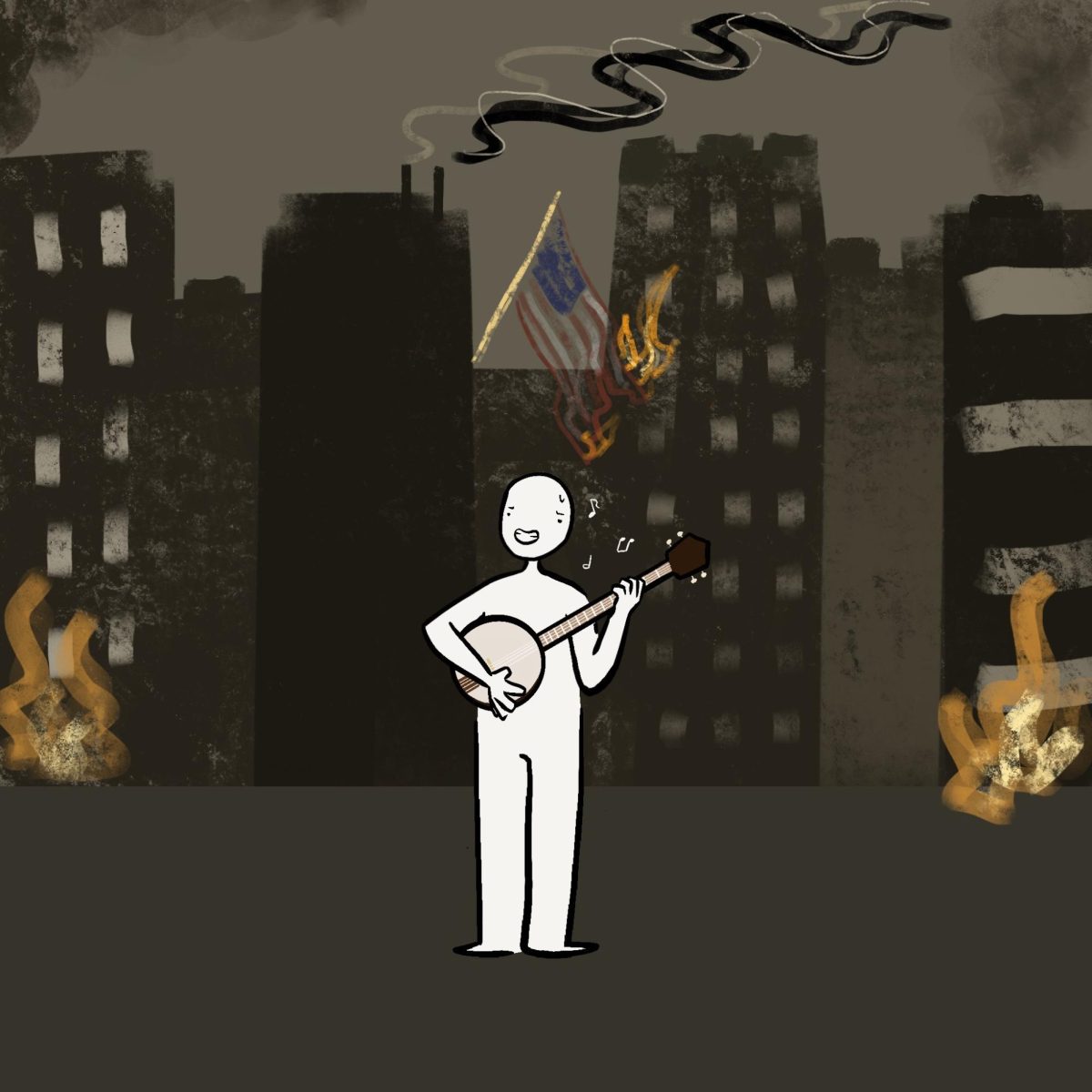In March 2000, Canadian author Malcolm Gladwell released The Tipping Point, a groundbreaking novel that analyzed social change through an epidemiological lens. Today, 24 years after The Tipping Point’s publication, he has released another masterwork.
Gladwell established himself by breaking down academic theory and applying it to everyday situations, often arriving at takeaways that contradict conventional wisdom. The newest addition to his corpus, The Falling-Over Instant, elucidates the phenomenon by which social epidemics spread. Unlike his earlier book The Tipping Point, The Falling-Over Instant uses words different from those used in The Tipping Point, and therefore is entirely different from The Tipping Point.
Throughout the book, Gladwell uses amphibian ecosystems as his main case study. Using his characteristic simplification of specialized academic research, Gladwell breaks down the definitions of “frog” and “toad” in a way that readers can understand. But his greatest source is personal experience. Gladwell purchased a living frog and toad and studied how the amphibians interact. Eventually, he witnessed the frog push something over and saw the toad’s reaction firsthand. Gladwell also traveled to the Sumaco volcano in Ecuador and studied the relationship between the rare Osornophryne sumacoensis toad and the Pristimantis ernesti frog to further understand how these species help things fall over. With remarkable acumen, Gladwell draws a striking connection between amphibian and human behavior.
Ingeniously, the visionary author introduces three types of people that are crucial to making things fall over: Frogs, Toads, and Mavens. The Frogs, as the name suggests, create instances in which things fall over by pushing them. The Toads make deep gurgling noises to announce to the public that something has fallen over. Finally, the Mavens know all about things that fall over. In Gladwell’s words, “This radical idea completely changes the way that society examines how things fall over.”
In later chapters, the radical author references various anecdotes and studies, all demonstrating how frogs only push things over in certain circumstances. For example, Gladwell found that frogs and toads from communities with over 149 individuals generally do not push things over—what Gladwell calls the “Rule of 149”. This is an updated version of his earlier “Rule of 150”, which he revised after discovering that he accidentally included himself in the counting. Since frogs are pretty similar to humans, humans must also be in the right situation to make things fall over. Gladwell terms this social phenomenon the “Strength of the Situation”. To those who have read The Tipping Point, the Strength of the Situation may sound similar to the Power of Context. However, the Strength of the Situation is distinct because of its relation to frogs.
We found The Falling-Over Instant to be a groundbreaking piece on the way things fall over, and who can make them fall over. Since our society is based on the falling-over of things, Gladwell’s insights have immediate applications in all facets of life: legislature, education, medicine, and salmon farming will all be revolutionized by The Falling-Over Instant. Five out of five falcons—a must-read.
This article also appears in our November 2024 print edition.













